Based near Glasson in Co Westmeath, James Nally milks 200 cows. He tries to run the farm as cost-effectively as possible in an attempt to drive profitability.
During the summer months and for as long as possible at either end he runs a couple of zero grazing machcines, one larger one for the drier bigger field and a tidier one for the more awkward spots. Once conditions deteriorate heading for the winter and the cows come in full time, a Keenan MechFiber 400 is the mainstay of the feeding system. This is a sizeable machine, with a capacity of 28m3.
James bought this machine four years ago from Keenan as part of the company’s approved range. This is where machines are brought back to the factory and given a complete refurbishment, including being relined. James said it was as good as a new machine when he got it, without the expense involved in buying a shiny one.
The main reason that James bought the big Keenan was its ability to mix large loads and also the way it could unload faster than previous machines he had owned. James makes all his own silage in bale form. He mows with a Krone trailed mower and uses a selection of machines including a tedder, Elho wuffler and twin-rotor rake to prepare the grass before baling with a McHale Fusion baler.
James tries to do as much of the work as possible on the farm with his own machinery, but is not one for buying new stuff when older gear will do the job. The big Keenan is usually on a Case Mx 135 and this lady has more than enough power to keep the mixer working perfectly. When fully loaded, the Keenan can have up to 18t of mix in it. Over the years, beet, silage, soya hulls and pot ale syrup have all been mixed in the big paddle feeder.
Grass growth
The Keenan usually works from early November till March depending on the conditions and grass growth.
As this machine is only ever used to handle baled silage, it is fitted with Keenan’s bale handling system.
The bale handler uses the paddles and top knife to efficiently and effectively chop bales. Steel fingers which lie in the path of the paddles ensure the round bale is slowly fed into the machine. This gives a continuous flow of material into the machine for the paddles to catch and chop against the top knife. This top knife ensures the bale is sliced into small pieces which fall into the machine, where they are chopped to the required length using the floor-mounted knives and paddles.
Feed structure
The essential feed structure of the ration is maintained due to the fixed distance between the knives and paddles. This ensures the material is not over-chopped. A hydraulic creel holds the bale in place while chopping. This can be easily lowered during transport and emptying, ensuring there is no great increase in the height of the machine. This system has been upgraded on Keenan’s newer machines and now uses curved tines instead of the straight ones on this machine.
James said it takes 90-odd seconds for the machine to ingest each bale so when he is using 10 bales in a load it takes 15 minutes to mix a full load. The farm uses around 2,000 bales per winter feeding season. When loaded, the machine can hold up to 18t of mix with good-quality silage and a massive 25t if the silage is very wet. The machine weighs 12t when empty so, with an 18t load, the gross weight would be upwards of 30t. For this reason, a good solid surface is required for this big machine to move around.
Keenan says 120hp is sufficient. This may be enough to actually drive the paddle system and mix the load, but in these times of smaller stature, big horsepower tractors, I believe that something more in the 140hp range, as James uses, is required to handle a mixer of this size.
The mix
On the farm, they mix one to two mixes depending on the ratio of milking to dry cows that are being fed at the time. James finds the size of the machine suits him as it shortens the time that is required to feed this large herd. During the four years James has had the machine, he has had no major mechanical problems with it except the standard wear and tear and one replacement chain. James believes this machine saves him time every day during the winter months and allows him and his staff to get on with other jobs around the yard and farm.

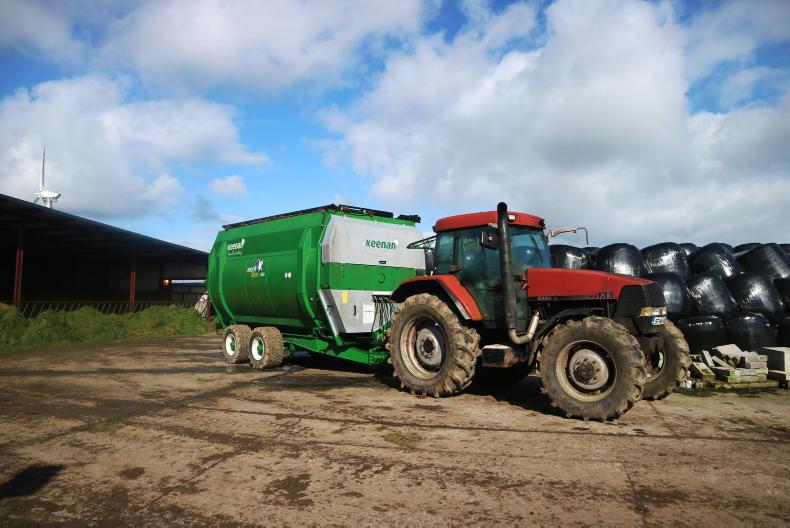




 This is a subscriber-only article
This is a subscriber-only article








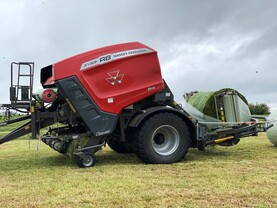
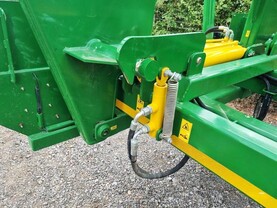
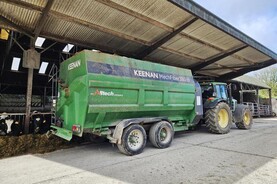
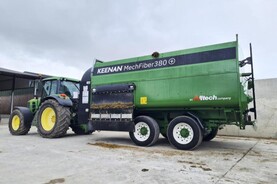
SHARING OPTIONS: